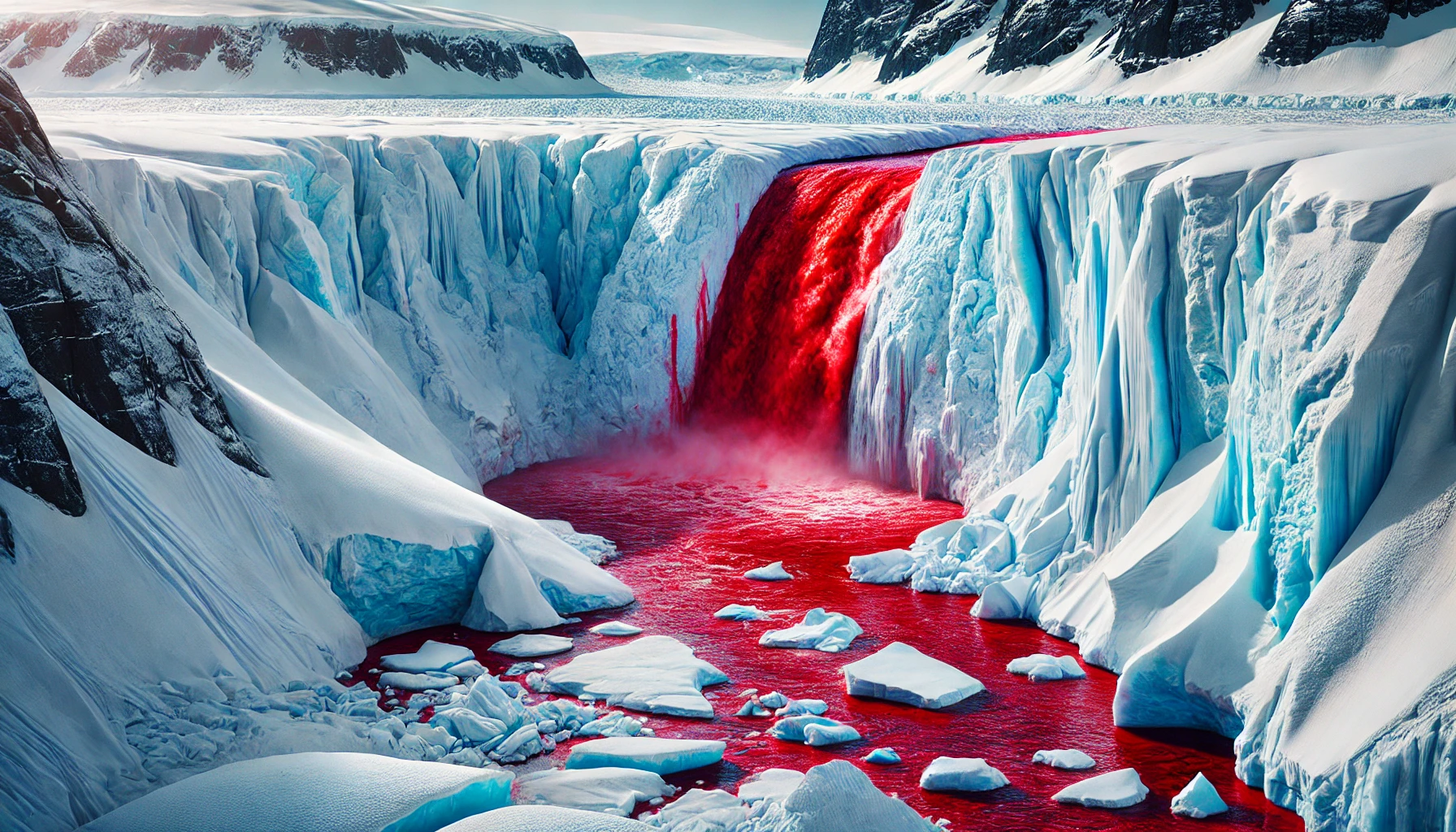Antarctica, the southernmost continent, is renowned for its pristine icy landscapes and extreme climate. Yet, among its many natural wonders, one of the most intriguing and visually striking is Blood Falls. This natural phenomenon not only captivates the curiosity of scientists and tourists alike but also serves as a fascinating subject for environmental studies.
Unveiling the Mystery
Blood Falls is located at the edge of the Taylor Glacier, a prominent feature in Antarctica’s vast wilderness. The falls are famous for their eerie, deep red coloring, which starkly contrasts with the surrounding white snow and blue ice. This red hue is not the result of algae or any dye; it is caused by iron-rich water that oxidizes upon contact with the air, much like rust.
A Window into Ancient Microbial Life
The source of Blood Falls’ water is a subglacial lake, trapped beneath the glacier for over a million years. This isolated aquatic system has been found to harbor an ancient and diverse microbial community. These microbes have adapted to the cold, oxygen-starved environment, using sulfur and iron as energy sources. The study of Blood Falls has provided valuable insights into the possibility of life on other planets, especially those with extreme conditions similar to those under the Taylor Glacier.
Impact on Climate Science
The unique conditions at Blood Falls have also allowed scientists to study the effects of climate change on glacial melting and subglacial ecosystems. The findings are crucial for understanding how melting glaciers can impact sea levels and the global ecosystem.
A Site of Pristine Beauty and Scientific Research
Despite its remote location, Blood Falls attracts researchers and adventure tourists who are eager to witness this natural oddity. The site offers a rare combination of natural beauty and scientific opportunity, making it a bucket-list destination for those interested in Earth sciences.
Conclusion
Blood Falls is a remarkable feature of Antarctica that not only offers a spectacle of natural beauty but also serves as a critical site for scientific research. It reminds us of the planet’s age, resilience, and the continuous cycle of life in even the most extreme conditions.


1 thought on “The Mysterious Allure of Antarctica’s Blood Falls”